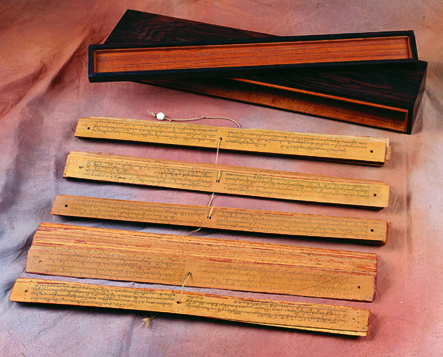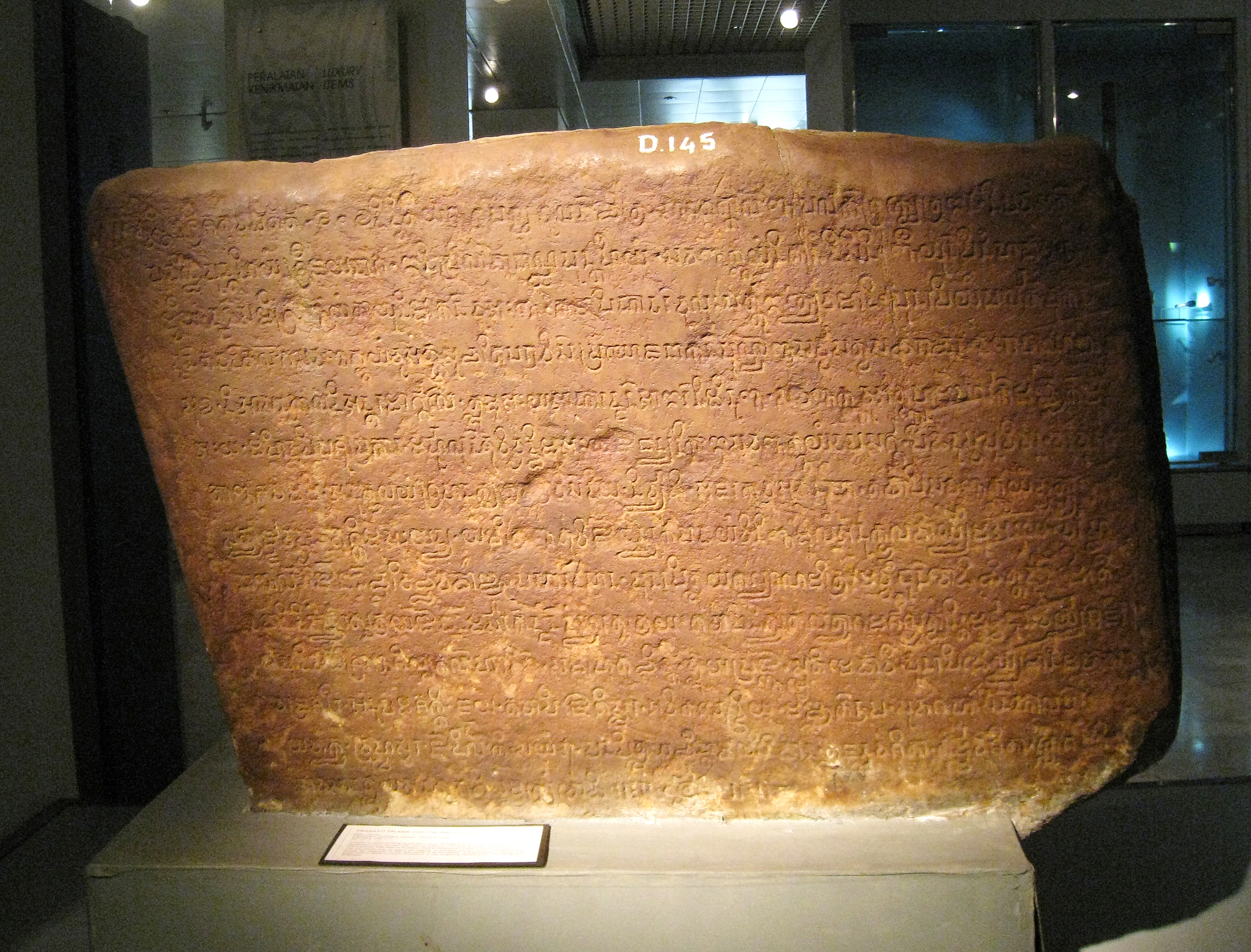|
Rajahnate Of Butuan
Butuan, sometimes referred to as the Kingdom of Butuan (; Butuanon: ; ; ), was a precolonial Bisaya Hindu polity (''lungsod'') centered around northeastern Mindanao island in present-day Butuan, Philippines. It was known for its gold mining, gold jewelry and other wares, and its extensive trade network across maritime Southeast Asia and elsewhere. Over its long history the lungsod had direct trading relationships with the ancient civilizations of China, Champa, Đại Việt, Pon-i (Brunei), Srivijaya, Majapahit, Kambuja, and even Persia as well as areas now comprised in Thailand. The balangay (large outrigger boats) that have been found along the east and west banks of the Libertad River (the old Agusan River) have revealed much about Butuan's history. As a result, Butuan is considered to have been a major trading port in the Caraga region during the precolonial era. Etymology The name ''Butuan'' is believed to have existed long before the Spanish conquistadores arri ... [...More Info...] [...Related Items...] OR: [Wikipedia] [Google] [Baidu] |
Monarchy
A monarchy is a form of government in which a person, the monarch, reigns as head of state for the rest of their life, or until abdication. The extent of the authority of the monarch may vary from restricted and largely symbolic (constitutional monarchy), to fully autocratic (absolute monarchy), and may have Political representation, representational, Executive (government), executive, legislative, and judicial functions. The Order of succession, succession of monarchs has mostly been Hereditary monarchy, hereditary, often building dynasties; however, monarchies can also be elective monarchy, elective and Self-proclaimed monarchy, self-proclaimed. Aristocracy (class), Aristocrats, though not inherent to monarchies, often function as the pool of persons from which the monarch is chosen, and to fill the constituting institutions (e.g. Diet (assembly), diet and Royal court, court), giving many monarchies oligarchic elements. The Legitimacy (political)#Monarchy, political legitim ... [...More Info...] [...Related Items...] OR: [Wikipedia] [Google] [Baidu] |
Maritime Southeast Asia
Maritime Southeast Asia comprises the Southeast Asian countries of Brunei, Indonesia, Malaysia, the Philippines, Singapore, and East Timor. The terms Island Southeast Asia and Insular Southeast Asia are sometimes given the same meaning as Maritime Southeast Asia. Other definitions restrict Island Southeast Asia to just the islands between mainland Southeast Asia and the continental shelf of Australia and New Guinea. There is some variability as to whether Taiwan is included in this. Peter Bellwood includes Taiwan in his definition, as did Robert Blust, whilst there are examples that do not. The 16th-century term " East Indies" and the later 19th-century term " Malay Archipelago" are also used to refer to Maritime Southeast Asia. In Indonesia, the Old Javanese term " Nusantara" is also used as a synonym for Maritime Southeast Asia. The term, however, is nationalistic and has shifting boundaries. It usually only encompasses Peninsular Malaysia, the Sunda Islands, Ma ... [...More Info...] [...Related Items...] OR: [Wikipedia] [Google] [Baidu] |
The Philippine Star
''The Philippine Star'' (self-styled ''The Philippine STAR'') is an English-language newspaper in the Philippines and the flagship brand of the Philstar Media Group. First published on July 28, 1986, by veteran journalists Betty Go-Belmonte, Max Soliven and Art Borjal, it is one of several Philippine newspapers founded after the 1986 People Power Revolution. Its sister publications include business newspaper '' BusinessWorld''; Cebu-based, English-language broadsheet '' The Freeman''; Filipino-language tabloids '' Pilipino Star Ngayon'' and ''Pang-Masa''; Cebuano-language tabloid ''Banat'', online news portals Philstar.com, PhilstarLife.com, Interaksyon (formerly with News5), LatestChika.com, Wheels.PH, PropertyReport.PH, Multiverse.PH and TV/digital production unit Philstar TV. In March 2014, the newspaper was acquired by MediaQuest Holdings, Inc., a media conglomerate subsidized by the PLDT Beneficial Trust Fund, after the company purchased a majority stake in Philst ... [...More Info...] [...Related Items...] OR: [Wikipedia] [Google] [Baidu] |
Caraga
Caraga, officially the Caraga Administrative Region (or simply known as Caraga region) and designated as Region XIII, is an Regions of the Philippines, administrative region in the Philippines occupying the northeastern section of Mindanao. The region was created through ''Republic Act No. 7901'' on February 23, 1995. The region comprises five provinces: Agusan del Norte, Agusan del Sur, Dinagat Islands, Surigao del Norte, and Surigao del Sur; six cities: Bayugan, Bislig, Butuan (a highly-urbanized city), Cabadbaran, Surigao City, Surigao and Tandag; 67 municipalities and 1,311 barangays. Butuan, the most urbanized city in Caraga, serves as the regional administrative center. Etymology Caraga is named after the Kalagan people (Spanish language, Spanish "Caragan"), a Mansakan languages, Mansakan group native to the regions of Davao Region, Davao and parts of Caraga who speak the Kalagan languages. The name itself is from ''kalagan'' (literally "[strong] spirited") which means ... [...More Info...] [...Related Items...] OR: [Wikipedia] [Google] [Baidu] |
Agusan River
The Agusan River is third longest river in the Philippines, located in the north-eastern part of Mindanao island, draining majority of the Caraga region and some parts of Davao de Oro. It is the country's third largest river (after the Cagayan River and Rio Grande de Mindanao) with a total drainage area of and an estimated length of from its origin. Geography The headwaters of the river are found in the mountains of Davao de Oro, near its border with Davao Oriental and east of Tagum. It flows through the wide Agusan River valley which measures from south to north and varies from in width. Plains of Mindanao It finally drains into Butuan Bay at its mouth in Butuan. One of the prominent features in the Agusan River basin is the presence of the Agusan Marsh covering a total area of . The marsh serves a flood retention basin for the Agusan River, cutting the high discharge of water causing flash floods in the lower reaches of the river. Aside from that, the marsh harbors uni ... [...More Info...] [...Related Items...] OR: [Wikipedia] [Google] [Baidu] |
Balangay
A balangay, or barangay, is a type of lashed-lug boat built by joining planks edge-to-edge using pins, dowels, and fiber lashings. They are found throughout the Philippines and were used largely as trading ships up until the colonial era. The oldest known balangay are the eleven Butuan boats, which have been carbon-dated individually from 689 to 988 CE and were recovered from several sites in Butuan, Agusan del Norte. The Butuan boats are the single largest concentration of lashed-lug boat remains of the Austronesian vessels, Austronesian boatbuilding traditions. They are found in association with large amounts of trade goods from East Asia, Southeast Asia, and as far as Persia, indicating they traded as far as the Middle East. Balangay were the first wooden watercraft excavated in Southeast Asia. Balangay are celebrated annually in the Balanghai Festival of Butuan. Names ''Balangay'' was one of the Pigafetta's dictionary#Some List of Words, first native words the Europeans ... [...More Info...] [...Related Items...] OR: [Wikipedia] [Google] [Baidu] |
Thailand
Thailand, officially the Kingdom of Thailand and historically known as Siam (the official name until 1939), is a country in Southeast Asia on the Mainland Southeast Asia, Indochinese Peninsula. With a population of almost 66 million, it spans . Thailand Template:Borders of Thailand, is bordered to the northwest by Myanmar, to the northeast and east by Laos, to the southeast by Cambodia, to the south by the Gulf of Thailand and Malaysia, and to the southwest by the Andaman Sea; it also shares maritime borders with Vietnam to the southeast and Indonesia and India to the southwest. Bangkok is the state capital and List of municipalities in Thailand#Largest cities by urban population, largest city. Tai peoples, Thai peoples migrated from southwestern China to mainland Southeast Asia from the 6th to 11th centuries. Greater India, Indianised kingdoms such as the Mon kingdoms, Mon, Khmer Empire, and Monarchies of Malaysia, Malay states ruled the region, competing with Thai states s ... [...More Info...] [...Related Items...] OR: [Wikipedia] [Google] [Baidu] |
Persia
Iran, officially the Islamic Republic of Iran (IRI) and also known as Persia, is a country in West Asia. It borders Iraq to the west, Turkey, Azerbaijan, and Armenia to the northwest, the Caspian Sea to the north, Turkmenistan to the northeast, Afghanistan to the east, Pakistan to the southeast, and the Gulf of Oman and the Persian Gulf to the south. With a Ethnicities in Iran, multi-ethnic population of over 92 million in an area of , Iran ranks 17th globally in both List of countries and dependencies by area, geographic size and List of countries and dependencies by population, population. It is the List of Asian countries by area, sixth-largest country entirely in Asia and one of the world's List of mountains in Iran, most mountainous countries. Officially an Islamic republic, Iran is divided into Regions of Iran, five regions with Provinces of Iran, 31 provinces. Tehran is the nation's Capital city, capital, List of cities in Iran by province, largest city and financial ... [...More Info...] [...Related Items...] OR: [Wikipedia] [Google] [Baidu] |
Khmer Empire
The Khmer Empire was an empire in Southeast Asia, centered on Hydraulic empire, hydraulic cities in what is now northern Cambodia. Known as Kambuja (; ) by its inhabitants, it grew out of the former civilization of Chenla and lasted from 802 to 1431. Historians call this period of History of Cambodia, Cambodian history the Angkor period, after the empire's most well-known capital, Angkor. The Khmer Empire ruled or vassalised most of Mainland Southeast Asia and stretched as far north as southern China. The beginning of the Khmer Empire is conventionally dated to 802, when Khmer people, Khmer prince Jayavarman II declared himself ''chakravartin'' (, a title equivalent to 'emperor') in the Phnom Kulen mountains. Although the end of the Khmer Empire has traditionally been marked with the fall of Angkor to the Siamese Ayutthaya Kingdom in 1431, the reasons for the empire's collapse are still debated amongst scholars. Researchers have determined that a period of strong monsoon rains ... [...More Info...] [...Related Items...] OR: [Wikipedia] [Google] [Baidu] |
Majapahit
Majapahit (; (eastern and central dialect) or (western dialect)), also known as Wilwatikta (; ), was a Javanese people, Javanese Hinduism, Hindu-Buddhism, Buddhist thalassocracy, thalassocratic empire in Southeast Asia based on the island of Java (in modern-day Indonesia). At its greatest extent, following significant military expansions, the territory of the empire and its tributary states covered almost the entire Nusantara (term), Nusantara archipelago, spanning both Asia and Oceania. After a Regreg war, civil war that weakened control over the vassal states, the empire slowly declined before collapsing in 1527 due to an Demak–Majapahit conflicts, invasion by the Demak Sultanate, Sultanate of Demak. The fall of Majapahit saw the rise of History of Indonesia#Islamic civilizations, Islamic kingdoms in Java. Established by Raden Wijaya in 1292, Majapahit rose to power after the Mongol invasion of Java and reached its peak during the era of the queen Tribhuwana Wijayatungga ... [...More Info...] [...Related Items...] OR: [Wikipedia] [Google] [Baidu] |
Srivijaya
Srivijaya (), also spelled Sri Vijaya, was a Hinduism, Hindu-Buddhism, Buddhist thalassocracy, thalassocratic empire based on the island of Sumatra (in modern-day Indonesia) that influenced much of Southeast Asia. Srivijaya was an important centre for the expansion of Buddhism from the 7th to 11th century AD. Srivijaya was the first polity to dominate much of western Maritime Southeast Asia. Due to its location, Srivijaya developed complex technology utilizing maritime resources. In addition, its economy became progressively reliant on Maritime Silk Road, the booming trade in the region, thus transforming it into a luxury good, prestige goods-based economy. The earliest reference to it dates from the 7th century. A Tang dynasty Chinese people, Chinese Bhikkhu, monk, Yijing (monk), Yijing, wrote that he visited Srivijaya in 671 for six months. The earliest known inscription in which the name Srivijaya appears also dates from the 7th century in the Kedukan Bukit inscription fo ... [...More Info...] [...Related Items...] OR: [Wikipedia] [Google] [Baidu] |






